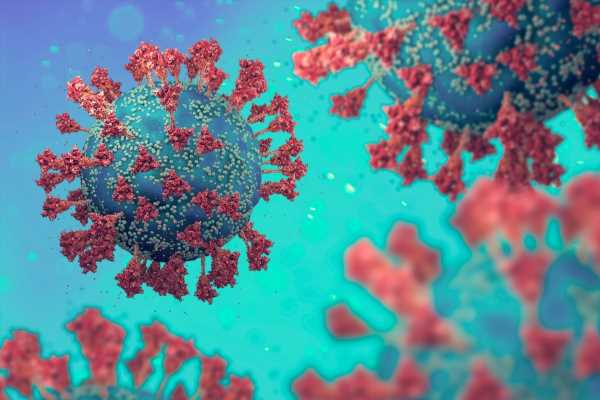Antigenic differences between early SARS-CoV-2 variants
In a recent study published in Science Immunology, researchers used antigenic cartography to quantify and visualize antigenic differences between multiple severe acute respiratory syndrome coronavirus 2 (SARS‐CoV‐2) variants.

Background
The continuous emergence of SARS-CoV-2 variants of concern (VOCs), such as Omicron, might impact the efficacy of coronavirus disease 2019 (COVID-19) vaccines. Thus, it is important to assess antigenic properties of future SARS-CoV-2 VOCs to inform future vaccination strategies. Moreover, only a handful of studies have investigated antigenic characteristics of the Omicron variant BA.2, which differs substantially from its predecessor BA.1 and is currently replacing it in several countries.
About the study
In the present study, the authors investigated the degree to which BNT162b2 COVID-19 vaccination-induced sera neutralized Omicron BA.2. They obtained sera from 10 individuals who had received one, two, or three vaccine doses.
Further, the researchers used antigenic cartography to investigate antigenic relationships between early SARS-CoV-2 variants, viz., D614G, Alpha, Beta, Gamma, Delta, Zeta, Mu, and Omicron sub-lineages BA.1 and BA.2. They used the Syrian golden hamster model to generate antisera against all these variants. High viral ribonucleic acid (RNA) titers in nasal washes at one dpi, and high homologous antibody titers at 26 dpi confirmed that all the test animals were successfully infected.
Plaque reduction neutralization titer (PRNT) assay shows a 50% reduction in virus-infected cells (PRNT50). The team performed a PRNT assay on authentic SARS-CoV-2 and pseudotyped viruses to generate antigenic maps. As a precautionary step, the researchers sequenced viral stocks and the original respiratory samples to confirm the absence of culture-acquired mutations. Moreover, they again sequenced swabs seven days post-infection (dpi) to confirm that SARS-CoV-2 did not mutate during the study duration.
The researchers cultured the spike variants D614G, Alpha, Beta, Kappa, Delta, and Omicron BA.1 in Vero-E6 cells to perform initial neutralization assays. All homologous sera neutralized to high titers except Omicron BA.1. All sera showed nine- to 43-fold reduced cross-neutralizing titers against Omicron. Conversely, sera from Omicron BA.1-infected hamsters showed a two- to 81-fold reduction in cross-neutralizing titers.
The team also performed pseudovirus neutralization assays on the Calu-3 cell line. They constructed antigenic maps from the neutralization data of both Calu-3 and VeroE6 cells. SARS-CoV-2 enters this cell line via the serine protease-mediated entry pathway, whereas it takes the cathepsin-mediated endocytic entry pathway in VeroE6 cells.
Study findings
The same antigens were plotted within a one-fold dilution from each other in the Calu-3 cells and VeroE6 cells. Therefore, the type of cell line used for the neutralization assay did not change the topology of the antigenic map. Moreover, there was a significant correlation between the crude neutralizing titers of the five variants on Calu-3 and VeroE6 cells.
Notably, in the antigenic maps generated with authentic SARS-CoV-2 and pseudovirus, the antigen positions differed no more than two-fold dilution. While all SARS-CoV-2 variants clustered close together, Omicron BA.1 acquired a position 10- to 38-fold dilutions away from the nearest virus, showing its distinct antigenic properties. The antigenic map generated using the extended neutralization dataset also showed that the Omicron BA.1 and BA.2 remained distant on the antigenic map, with BA.2 positioned closer to the main cluster.
Authentic and pseudoviruses with the E484K mutation (Beta, Gamma, Zeta, and Mu) clustered together to the top-right of the ancestral D614G strain. On the other hand, those with the L452R/Q substitutions were grouped to the left. The Beta and Gamma variants, which have K417N/T mutation in addition to the E484K mutation, clustered together on the antigenic map.
Conclusions
The present study demonstrated that Omicron BA.1 and BA.2 have distinct antigenic properties, yet, both escape vaccine-induced antibody responses.
A previous study by Wilks and colleagues has shown similar clustering of SARS-CoV-2 variants on antigenic maps, indicating that hamsters and humans generate similar antibody responses. The Wilkins maps also showed some discrepancies; subsequently, their map showed a ~two-fold larger distance between D614G and variants Beta, Gamma, and Mu compared to the antigenic map of the present study. The differences might likely be due to lower titers observed in naturally-infected humans compared with experimentally-infected hamsters.
It is difficult to obtain human sera post-primary SARS-CoV-2 infection. The current study presented hamster antisera as a useful surrogate to generate antigenic maps and assess antigenic relationships between SARS-CoV-2 variants.
- Antigenic cartography of SARS-CoV-2 reveals that Omicron BA.1 and BA.2 are antigenically distinct. Anna z. Mykytyn, et al. Science Immunology. doi: 10.1126/sciimmunol.abq4450 https://www.science.org/doi/10.1126/sciimmunol.abq4450
Posted in: Medical Science News | Medical Research News | Disease/Infection News
Tags: Antibody, Antigen, Assay, Cell, Cell Line, Coronavirus, Coronavirus Disease COVID-19, covid-19, Efficacy, Homologous, Immunology, Mutation, Omicron, Pseudovirus, Respiratory, Ribonucleic Acid, RNA, SARS, SARS-CoV-2, Serine, Severe Acute Respiratory, Severe Acute Respiratory Syndrome, Syndrome, Vaccine, Virus

Written by
Neha Mathur
Neha is a digital marketing professional based in Gurugram, India. She has a Master’s degree from the University of Rajasthan with a specialization in Biotechnology in 2008. She has experience in pre-clinical research as part of her research project in The Department of Toxicology at the prestigious Central Drug Research Institute (CDRI), Lucknow, India. She also holds a certification in C++ programming.
Source: Read Full Article
